Snow-holing in Scotland has a long established history in both our own winter mountains and further afield. Over the last 10 years, snow-holing has grabbed the attention of the media and the viewing public. This exposure has introduced and encouraged people happy enough to pay for the experience. Andy Bateman* of Scot Mountain Holidays asks, should we assume what works in other mountains will work well in our own?
Likely Ambient Temperature
With the seasonal minimum in some recent Scottish winters approaching -20oC and an official record of –27.3oC, you would be forgiven for assuming you’d might be sleeping in temperatures approaching those of Arctic Norway.
Yet Cairngorm (1245m) has only ever recorded around half of this at –16.5oC (12th Jan 1987). Supporting this, Coire Cais Ski Base Station (630m) has a low of -9.2oC. The residents of nearby Nethybridge (210m) though, claimed the mercury dropped to -31.3oC on 10th January 1982. Satellite evidence suggests they were right!
The vital bit of information on these -30-ish lows are that they were all recorded during temperature inversions. The cold air flowed off the mountains and pooled in the valley bottoms where it cooled further whilst the mountain summits remained appreciably warmer. These record minima are in no way a reflection of the likely temperature you would find on our mountains. It’s not surprising when we’re never that far from a relatively warm sea in the UK!
So what temperature is likely when snow-holing in Scotland, let’s say, in the Cairngorms at around 1100m? The seasonal minimum for 900 m is usually around -8oC. At 1100 m this could translate to -10oC. Far more frequently winter temperatures at this height are around -5 and above. Our mountains simply don’t experience anything like the temperatures you might get in e.g. Arctic Norway.
Considering the warmer temperatures when snow-holing in Scotland, do we really need snow-hole features designed to capture warm air? Are sleeping platforms and cold air drains really necessary or should our aim be to lose the warm air?
Snow is a great insulator. A meter thickness in your roof and front wall is of vital importance in this regard. That is 20 cm of insulating snow both on the exterior and interior surfaces with 60 cm of well insulated structurally sound snow. Light penetrates to a depth of around 75 cm so if you see daylight, they’re getting too thin. It should also be borne in mind that a 1 m thick roof represents a considerable weight. It’s vital the front wall is adequately thick and strong enough to support the roof.
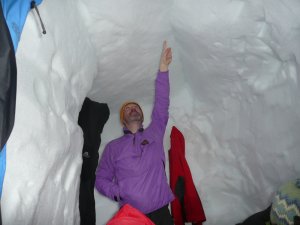
How high is that roof? Look at the apex centre.
Snow-hole sites by virtue of their high snow accumulation and steep slopes can be prone to avalanches. To be safe, you may need to pick a slope with a more gentle gradient and spend more time digging out the entrance. The majority of avalanches occur on slopes at or above 30 degrees. To maintain a 1 m thick roof, on a slope less than this, you’ll have to dig in a minimum 2+ horizontal meters from the top of the doorway before you start widening out the living area.
Avoid large areas of unsupported roof by keeping your snow-hole narrow. Aim for a depth of 2 body widths between the internal surfaces of the front and back walls.
This means you can create a relatively steep-angled apex ceiling which helps to avoid any drip points. Warm air can then be channelled towards the ventilation holes at the apex high points. In addition with it running the length of the snow-hole it increases the height with minimal snow removal giving everyone the opportunity to straighten their weary backs!
Importantly it also removes the unsupported dead weight from the ceiling. This is one of the most important aspects of snow-holing in Scotland. Although not mutually exclusive, removing the ceiling dead weight is of more importance to ceiling stability than temperature! Very few, experienced and inexperience alike, pay attention to removing the dead weight. I’ve managed to snow-hole once at +5 Deg C without any roof deformation! The roof of a snow-hole I constructed for the BBC Travel Show lasted through until around the 25th June!! The ceiling at that point was only a foot off the floor, but it hadn’t collapsed!! Every other snow-hole at that point was merely a hollow in the snow. As you create the apex be careful not to make the roof too thin. The strength of the roof is in it’s thickness.
Make sure there is good ventilation. My test is to regularly watch my breath. If it drifts off to one side it’s a good indication that ventilation is adequate. Cooking with pressure stoves in a poorly ventilated snow-hole is extremely dangerous due to the formation of toxic Carbon Monoxide. All pressure stoves work by first oxidising the fuel to Carbon Monoxide (CO) and then to Carbon Dioxide (CO2). The different colours in the flame indicate this. Irrespective of good ventilation a pan of icy water can have a severe quenching effect on the flame preventing combustion of the CO. Research for the British Antarctic Survey (BAS)** showed in heating a pan of icy water CO production could be significantly reduced by raising the pan supports higher above the flame. Snow-holers should acquaint themselves with the symptoms of CO poisoning.
To put this into perspective, I’m unaware of anyone in the last 25 years dying from CO poisoning whilst snow-holing in Scotland. I do know though, instructors who’ve attributed head aches to possible CO poisoning. It’s worth considering taking a small portable CO detector with you. In a snow-hole with a single entrance and no through air movement, ventilation may well be inadequate. Extinguish candles before you go to sleep as they also produce small amounts of CO.
Although the temperature may remain around 0oC you may well still be “injecting” appreciable heat energy into the snow pack. It takes considerable heat energy to turn snow at 0oC into water at 0oC so it will not be reflected in a temperature rise. It’s far more desirable that this heat energy drifts out of the doorways than being absorbed by the snow pack.
Make it large enough to stand up in. Large communal snow-holes are less prone to an abrupt temperature rise as they have better ventilation characteristics by virtue of having several entrances, etc. An entrance walled up with blocks in combination with an open doorway will often still allow plenty of ventilation.
Putting aside the dangerous scenario of cooking in a poorly ventilated snow-hole, I’ve never got up in the middle of the night to purely unblock a doorway for ventilation reasons. All the medical research I have seen (references below) doesn’t suggest there is any potential of becoming severely hypoxic in your sleep. Studies suggest sleep will become agitated, you will awake and in doing so get up and ventilate a stuffy snow-hole.
One potential hazard of digging a small snow-hole is you don’t have enough space to put the snow as you attempt to extricate yourself after a night of severe drifting. On one occasion I did have to tunnel out 1 ½ m before I hit the surface!
When it comes Scottish snow conditions, don’t underestimate how hard the snow can get. You will need a snow shovel with a metal scoop and a good snow saw. The sintering effects of strong sunlight and hard frosts of high pressure can make wind-slab snow astonishingly hard to dig. A good snow saw is often the only effective way to deal with this type of snow.
Many of the snow-hole sites are immediately adjacent to water courses. In addition, the snow pack often lasts well into the summer meaning there’s little opportunity for biological breakdown of human waste. If you do have to go you should do your business well away from the snow-hole site and far more preferably have some system to carry it out. Cairngorm Mountain’s Snow White Project has greatly improved the situation at the Cairngorm sites. All snow-holers coming to the Cairngorms are encouraged to use it.
The safety of a snow-holing in Scotland is often a reflected by the time it has taken to dig. I’m cautious about suggesting how long digging should take as it depends on a number of factors, not least the condition of the snow. From a “duty of care” perspective I feel a large communal snow-hole is much better than several separate small ones. I normally anticipate spending 4 to 5 hrs digging a 4 plus person snow-hole. I accept in soft snow conditions that this can possibly be shorter for a fit party of 2 each digging their own entrance.
With the vagaries of the winter weather, if done correctly Snow-holing is often the far safer option compared to a tented high camp in Scotland’s Winter Mountains.

* Andy holds the WML and IML awards and has over 20 years Mountain Leading experience. He has guided well over 30 commercial snow-holing trips in this time and although none of the mountaineering qualifications have a remit that covers snow-holing, he is one of the few guides deemed competent by HSE criteria of “relevant experience” to run snow-holing trips.
** British Antartic Survey helped in a BSc thesis. Available on request from andrew@scotmountainholidays.com
Medical references:
www.ncbi.nim.ni.gov/pubmed/18665947
www.ncbi.nim.ni.gov/pubmed/9340627
www.ncbi.nim.ni.gov/pubmed/8355417
www.ncbi.nim.ni.gov/pubmed/15265339
One of the most frequently asked questions from those joining our winter courses is: What if there is no snow? Although we can’t control the weather, we can almost guarantee there will be snow—especially on the high peaks during winter and early spring. However, for those still concerned, let us put your worries to rest.
The Cairngorms are home to Britain’s most permanent snow beds, some of which persist well into July or even early August. The high altitude and vast plateau of the Cairngorms make them a natural snow trap. Even in milder winters, the unique topography and wind patterns often ensure that snow is captured and retained in key areas. According to a study by the Royal Meteorological Society, the Cairngorm plateau experiences snow coverage for an average of 76 days per year, making it one of the most reliable locations for snow in the UK.
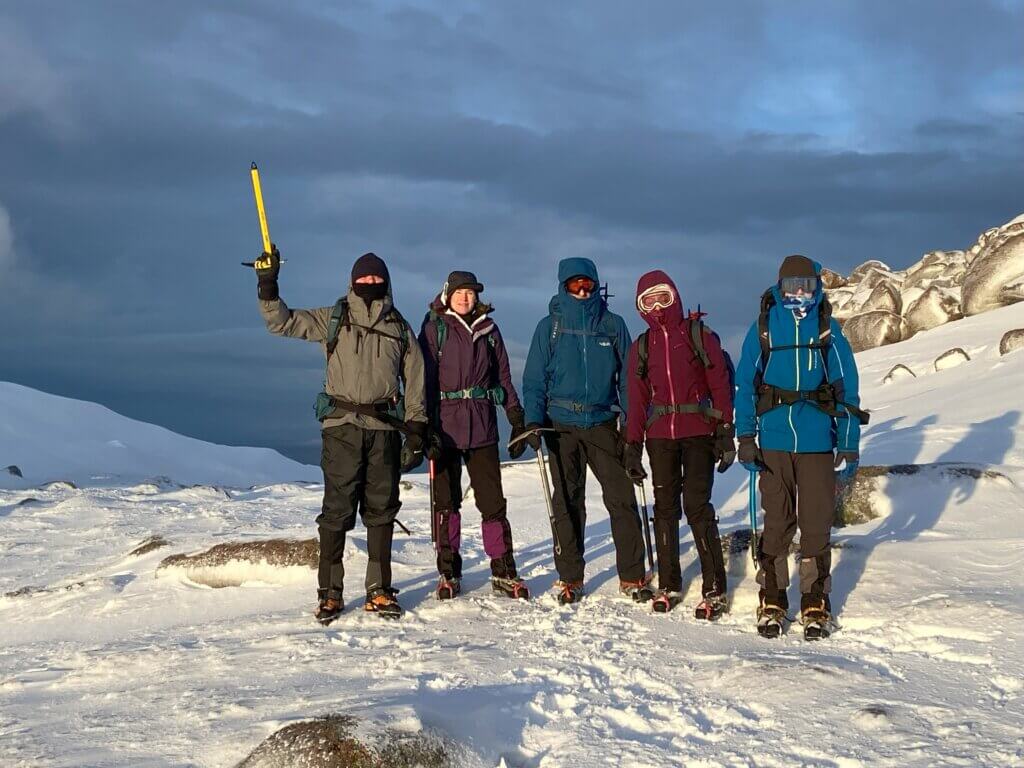
If, for some reason, the winter is unusually mild and snowfall is limited, it’s not the end of the world. Winter Skill courses with Scot Mountain Holidays are designed with flexibility in mind. Snow is just one of three critical factors that influence the course—the other two being wind (which facilitates snow drifting) and the expansive Cairngorm plateau (which helps to capture and hold snow).
Even if snow levels are lower, the skills taught during our courses remain relevant. In fact, hard, icy snow that forms after a thaw and subsequent freeze is often ideal for teaching crampon techniques. Fresh snow, while beautiful, doesn’t always add additional value to winter skills training.
In the 25 winter seasons that Scot Mountain Holidays has been running Winter Skills courses and hiking holidays, no course has ever been cancelled due to a lack of snow. This incredible track record highlights the reliability of the Cairngorms as a winter training destination.
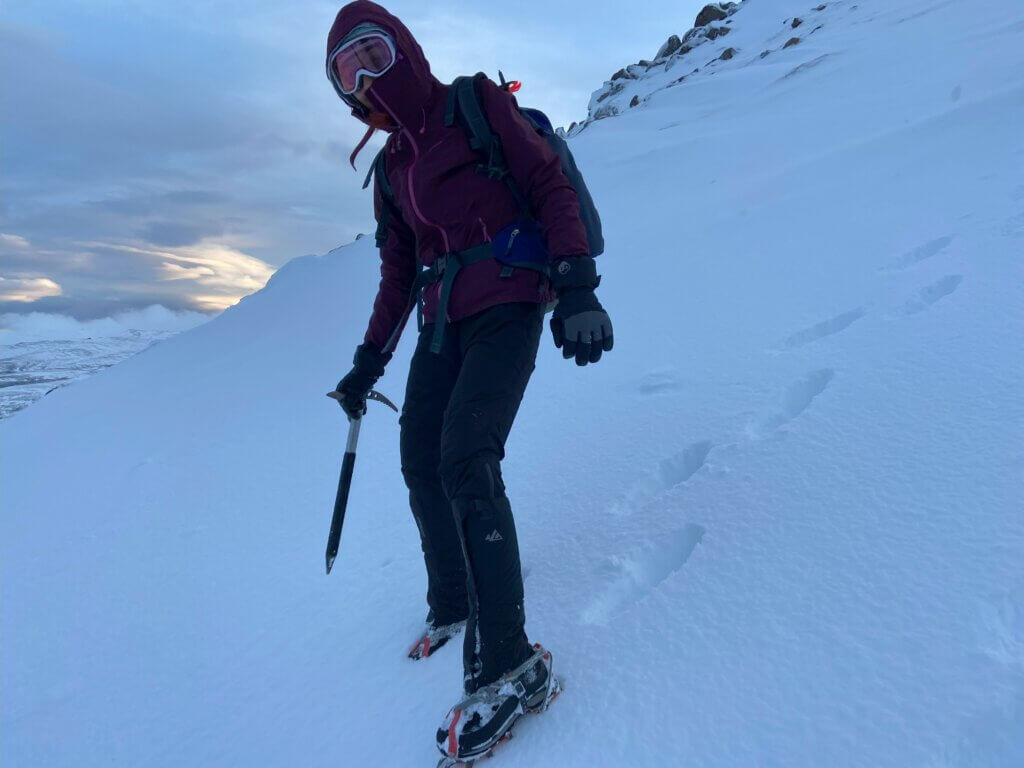
While snow is a strong likelihood on the peaks where our courses take place, there are many other elements that make your experience memorable. Thick, deep snow can sometimes make routes more strenuous. On the other hand, mixed conditions offer a chance to practice a wide variety of essential skills, including:
These skills are just as important, if not more so, than simply walking on deep snow.
Remember, winter skills are about preparing you for all types of conditions you might encounter in the mountains. Snow is a bonus, but not a requirement. The camaraderie, expert instruction, and opportunity to immerse yourself in Scotland’s stunning winter landscape are what truly make Scot Mountain Holidays’ courses unforgettable.
So, whether the snow is thick, patchy, or concentrated in specific areas, rest assured that your Winter Skills course will still be an incredible and valuable experience. The Cairngorms’ rugged beauty, combined with expert guidance, ensures your time with us is both safe and rewarding. As one participant noted, “The course was transformational—I learned so much, regardless of snow levels.”
Join us this winter to develop your confidence and skills in one of the UK’s most dramatic settings. With Scot Mountain Holidays, you’re in expert hands, and no matter the snow conditions, we’ll make sure your time in the Cairngorms is unforgettable.
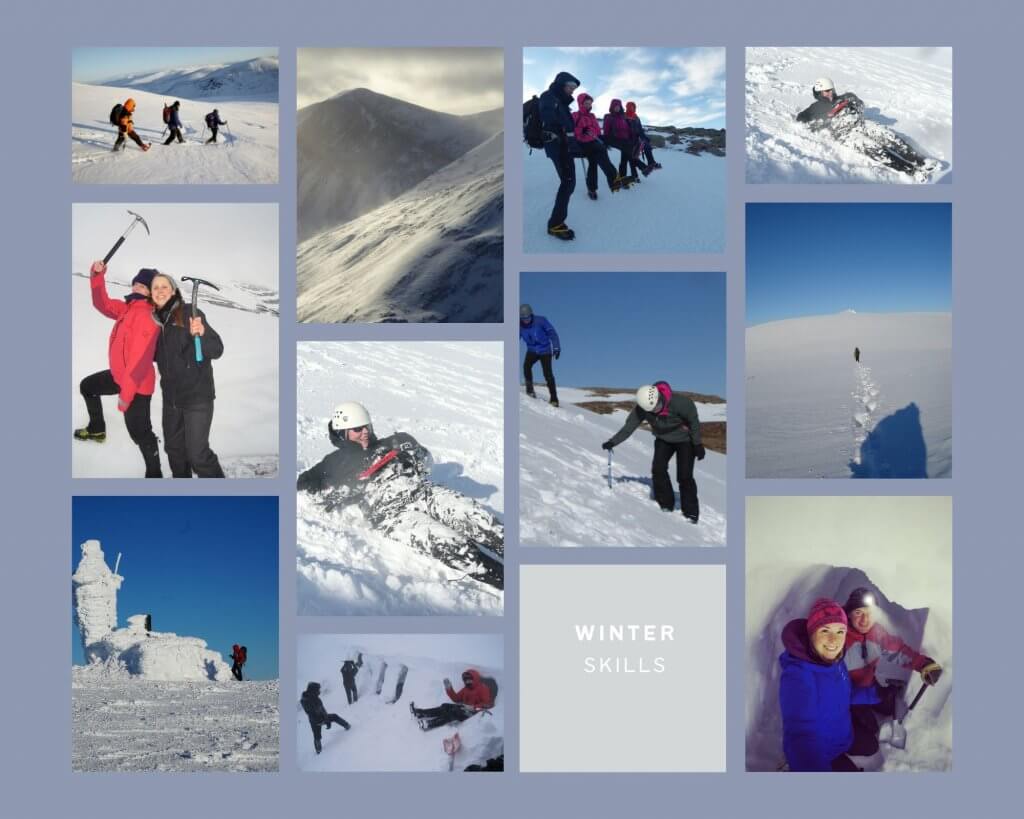
Scotland is a land of breathtaking beauty, with unique charms that shift with the seasons. While summer often steals the spotlight for visitors, winter remains a hidden gem offering raw beauty, crisp days, and unparalleled hiking experiences. If you’ve been hesitant to venture out during the colder months, let us convince you with five compelling reasons to go hiking in winter and join Scot Mountain Holidays for a trip you’ll never forget.
The peaks of Scotland are awe-inspiring at any time of year, but winter elevates their majesty to a whole new level. Snow-dusted summits, frost-kissed landscapes, and the clarity of winter skies combine to create an otherworldly spectacle. On clear days, the views are nothing short of magical, with the crisp air enhancing visibility and making every vista unforgettable. Scotland’s Cairngorms, for instance, often boast snow-covered peaks that rival the beauty of alpine ranges. Layer up, embrace the brisk wind, and let the beauty of hiking in winter reward your efforts.
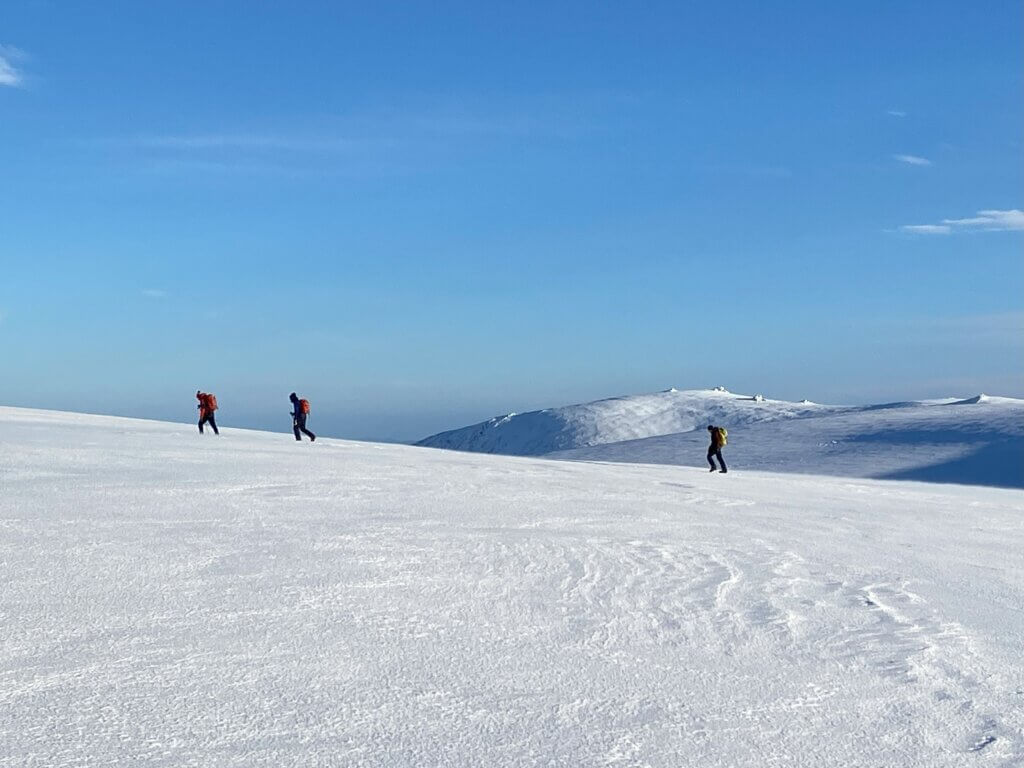
What a view! – New Year Winter Walking 2022 – 2023
The cold temperatures of winter naturally deter many would-be hikers, leaving the trails quieter and more serene. This means fewer crowds and more opportunities to immerse yourself in the solitude of Scotland’s wild spaces. With fewer distractions, you can fully connect with nature, reflect, and appreciate the tranquility of your surroundings. Imagine having iconic trails, like those in the Cairngorms or around Ben Nevis, almost entirely to yourself. It’s an unparalleled chance to experience Scotland’s rugged beauty in its purest form while hiking in winter.
Winter unveils a strikingly different perspective of Scotland’s landscapes. The absence of lush greenery exposes the raw, rugged beauty of the mountains—from dramatic rock formations to stark, snow-covered terrain. If you’re lucky enough to encounter fresh snowfall, the transformation is magical. The pristine white blanket enhances the contours and textures of the land, offering photographers and nature enthusiasts endless inspiration during their winter hikes. Plus, winter often brings incredible sunrises and sunsets that bathe the snow-dusted peaks in hues of gold and pink, perfect for unforgettable photos.
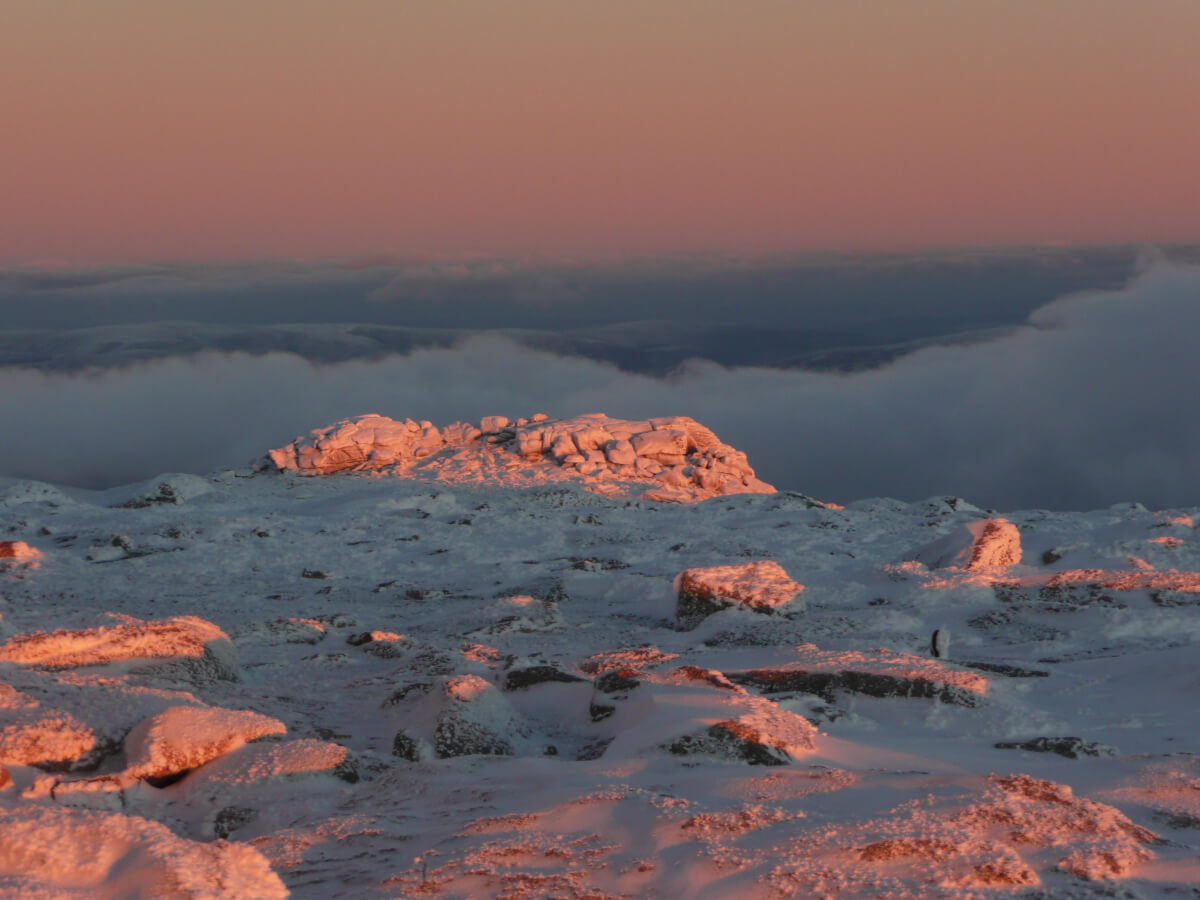
Winter sunset colours glowing on the snow covered Cairngorms
For the fitness-minded adventurer, hiking in winter provides an added bonus: increased calorie burn. The colder temperatures force your body to work harder to stay warm, meaning you’ll burn more calories compared to hiking in warmer weather. Add in the effort of navigating snow-covered paths, and your winter hike becomes an even more rewarding workout. Studies suggest that cold-weather exercise can burn up to 30% more calories, making winter hikes both invigorating and beneficial for your health.
Hiking in winter introduces unique challenges, from navigating icy trails to managing colder temperatures. These added elements demand a different level of preparation and skill, but they also offer an unparalleled sense of achievement. Conquering a winter hike builds confidence and leaves you with stories to share for years to come. Proper preparation—like wearing crampons and layering effectively—can transform these challenges into exciting opportunities to learn new skills. Plus, the sense of adventure and novelty makes every step more exciting.
If you’re ready to challenge yourself, embrace the season, and experience some of the most stunning terrain and views imaginable, hiking in winter in Scotland awaits. With the Cairngorms averaging over 100 days of snow cover per year, it’s one of the best places in the UK to experience a true winter wonderland. Join Scot Mountain Holidays for a guided adventure that will leave you with lasting memories and a newfound appreciation for this extraordinary season.
Setting off on expedition across the snowy Cairngorm plateau
When you think of snow, it’s easy to picture adrenaline-filled days of skiing or snowboarding. But what if you’re not a fan of the slopes or simply want to try something different? Scotland offers a winter wonderland full of thrilling alternatives that let you embrace the snow in unique ways.
Here are Scot Mountain Holidays’ top four snowy adventures for non-skiers, perfect for creating magical winter memories.
Hiking isn’t just a summer activity—winter hiking offers a whole new level of magic. With snow-dusted trails and tranquil, crowd-free paths, it’s the perfect way to experience Scotland’s rugged beauty in its most serene form.
Yes, winter hiking comes with challenges, but the rewards are extraordinary. Picture yourself surrounded by glistening peaks, breathing in crisp mountain air, and savoring the quiet that only snow can bring. Just be sure to bundle up and prepare for the elements!
For those craving adventure with a side of learning, Scot Mountain Holidays offers snow skills courses that are as practical as they are exhilarating.
From mastering ice axes to building emergency snow shelters or navigating icy terrain, these courses give you hands-on experience that’s both empowering and fun. Not only will you leave with stories to tell, but you’ll also pick up life-saving skills that every winter enthusiast should have.
Not every snowy adventure needs to be a grand expedition! Sometimes, the best memories come from simple, joyful moments.
Spend an afternoon building a snowman, crafting the perfect snow angel, or engaging in a good old-fashioned snowball fight. If you’re traveling with kids (or just feeling like one yourself), grab a sled and race down a snowy hill.
End your day by cozying up by a roaring fire with a hot drink and a good book. After all, there’s nothing like the warmth of home after a day of snowy fun.
If you’ve never tried snowshoeing, you’re in for a treat! Imagine strapping on tennis racket-like footwear and gliding effortlessly across snowy trails and frozen terrain. Snowshoeing is easy to learn, beginner-friendly, and a fantastic way to immerse yourself in Scotland’s breathtaking winter scenery. However, the snow conditions on the Scottish hills are not always suitable for snowshoeing which lends itself more to the soft powder snow you find in the Rockies or the Alps. It’s far more common to see winter hikers in Scotland out with crampons and an ice axe, than it is to see a group of snowshoers.
From snow-covered peaks to quiet, magical trails, Scotland is the ultimate destination for winter lovers. With Scot Mountain Holidays, you can enjoy a range of activities designed for adventurers who want to experience the snow without strapping on skis or a snowboard.
So, whether you’re trekking through glistening forests, learning new skills, or simply playing in the snow, Scotland promises a winter escape like no other.
Ready to trade the slopes for something different? Let Scot Mountain Holidays help you craft your perfect snow-filled adventure!
Crampon compatibility is important, but it’s far from the only factor to consider when choosing a suitable mountain boot for Scotland’s winter hills. With 25 winter seasons of guiding and Winter Skills instruction under his belt, Andy Bateman of Scot Mountain Holidays shares what to look for in a reliable winter mountain boot.
Scotland’s winter mountains are as diverse and changeable as the weather that shapes them. Snow conditions can vary dramatically in both type and depth—far more so than any lingering summer snow. Add to that the range of situations where you may encounter snow and ice, and it becomes clear: limiting yourself with the wrong boots could hold you back before you’ve even begun your ascent. Choosing the correct winter boots is essential.
Winter days in Scotland are short, and efficiency is key. Moving quickly and safely saves both energy and time. That’s why sole rigidity is vital.
The rigidity of a winter boot doesn’t come from the sole itself but from the mid-sole. It’s crucial that the boot is stiff both lengthways and across its width. Most modern boots with rigidity in one direction will have it in the other, too.
A stiff sole concentrates your weight effectively, whether you’re cutting into snow and ice or relying on the boot’s grip. Here’s why this matters:
B2 and B3 boots provide superior grip on snow and ice compared to B1 boots. This can mean less reliance on crampons for minor snow cover. Walking in crampons over thinly snow-covered rocks can be awkward and inefficient; in such conditions, a stiff boot often performs best.
Sometimes it’s faster and more practical to kick a few steps into firm snow rather than stop to put on crampons. Flexible B1 boots often don’t hold up here. When you try to kick “pigeon hole” steps, for example, the boot’s toe can bend upward and bounce off the surface instead of cutting in. This isn’t just inefficient—it’s uncomfortable.
In steep terrain, the ability to “front point” safely is essential. B1 boots are often too flexible: the toe bends upward, the heel drops, and the front crampon points can shear out of the snow or ice, increasing the risk of falling backward out of the step.
Crampons are tough pieces of kit, but they’re not indestructible. A flexible boot places unnecessary stress on the crampon, which can weaken it over time and eventually lead to failure. Using a rigid B2 or B3 boot supports your crampons properly, reduces wear, and ensures greater comfort for your feet.
A stiff, well-structured upper is equally important. In softer, more flexible boots, tightening crampon straps can squeeze and restrict your feet. This can reduce blood circulation, leading to cold feet—or worse, frostbite. B2 and B3 boots are built to prevent this, keeping your feet secure but comfortable.
Winter boots are designed with insulation in mind, which is critical for keeping feet warm in sub-zero temperatures. This insulation also tends to add padding, increasing overall comfort during long winter hikes. Cold feet are uncomfortable at best, and at worst, they can lead to injury or frost damage.
Your boots are as much a tool as your axe or crampons when it comes to winter walking. For the Scottish winter mountains, a B3 boot is not overkill—it’s an investment in safety, efficiency, and comfort. While a B1 boot might be adequate for summer treks involving glacier crossings in the Alps or Himalayas, it simply doesn’t offer the necessary performance for Scotland’s unpredictable winter conditions.
Before heading to your local outdoor gear shop, check which staff members are trained in proper boot fitting and when they’ll be available. Taking the time to find the right boots will make all the difference in your winter walking adventures.
If you’re preparing for your first winter trip—or just looking to upgrade your kit—remember: the right boots will let you tackle Scottish winter mountains with confidence. Also you don’t need to commit the first time you are trying out winter walking – you can hire boots to find out if that’s your thing or not.
Ready to hit the hills? Let Scot Mountain Holidays show you the ropes with expert-led Winter Skills courses.

Andy Bateman has instructed and guided for over 25 winter seasons across Scotland. At times its blue skies and a winter wonderland but being based in the Cairngorms he is no stranger to the sometimes uncompromising conditions that can be encountered on Scotland’s high mountains during the winter months.
Putting aside the obvious need to dress properly for the conditions, here are a few of his expert winter skills tips:
Unless your rucksack has a facility specifically for carrying crampons safely on the outside, they should be in a crampon bag inside your rucksack when not on your boots. They are heavy items of kit and can easily work loose when attached with exterior straps or bungee. Crampons carried on the outside can also be a source of injury for other members of the party e.g. in high winds.
The snow and ice conditions can be as varied as the weather that creates them. Don’t limit the techniques at your disposal before you’ve even set foot on the mountain by wearing bendy boots. A key and often overlooked feature of a stiff boot is that it allows you to concentrate your weight on the edges of the sole so you’re able to use them to cut into the snow surface. Your boot is as much a tool as your ice-axe or crampons. B1 “winter” boots are often too flexible to effectively kick steps in hard snow; if you try to front point, the toes tend to bend up and the heel drops causing the wearer to feel unstable. Fully rigid B3 mountaineering boots don’t feel overkill for a winter mountain walk.

Crampons at work
There are a few situations where a long shaft is an advantage but they are outweighed by the number of situations where a short shafted axe is your best bet. Go for an axe with a relatively straight shaft and no longer than 55cm irrespective of your height.
Remember in winter trekking your rucksack will be heavier, plus the extra weight of winter boots and crampons on your feet, the underfoot conditions and having to check the map more frequently all conspire to slow your pace. On top of this there are fewer daylight hours. It’s important that you’re not over ambitious with your route plan to prevent being caught out. Always make sure you have a decent headtorch.
Your rucksack is already heavier with all the necessary gear required by winter. Heavy boots, crampons and underfoot conditions will sap energy and slow you down. Don’t burden yourself further with superfluous kit by considering whether an item is really necessary for the day. At the same time, be sure you have everything you need.
 Full moon Snow-hole Expedition winter gear
Full moon Snow-hole Expedition winter gearEven with an insulated jacket around the tube, once the temperature drops below -3 deg C hydration bladders tend to easily freeze. You are better off with a water bottle in your sack as close to your back as possible to receive a little body heat. Better still take a thermos flask.
There are situations where an ice axe leash is an advantage but there are also a good number of situations where they can be a hazard. Have an arrangement where the leash can be easily added or removed from the head of the axe, i.e. tie a loop in the end of the leash and larks-foot it through the head of the axe. When you aren’t cutting steps or climbing the leash is probably best kept in your rucksack.
Remember, as your core temperature cools your body reduces its circulation to your extremities, like your hands. If you have cold hands, it may well be worth considering putting an extra layer on, as well as warmer gloves. If the body is compensating for a cooling core, to a certain extent, it doesn’t matter how well insulated your hands are, it’s not going to send anymore warm blood to the extremities.
Your body can burn up 40% more calories just by keeping itself warm. Underfoot conditions and heavy gear add to your body’s energy demands. Standing around for more than 10 minutes can mean folks start to get chilled. Schedule-in regular breaks where possible. I find a 10 min break after approximately every 80 min of walking is optimal. You need good judgement and one of the most sensitive organs in your body to a drop in temperature or a lack of energy is your brain. It needs to be well nourished by both.

Striding out to conquer the winter Cairngorms
Why do it? Because this is why it’s worth it.
Staying warm in the winter mountains is a vital winter skill. Andy Bateman has been guiding for Scot Mountain Holidays more than 25 years, so here are his 21 tips on staying winter warm and surviving the cold…
1, Don’t just think about putting on gloves. Your body conserves the core temperature by restricting the blood circulation to the extremities (e.g. lower limbs, hands & feet). So even though your torso may not necessarily feel cold, still think about adding an extra layer. If your core is “toasty” your body will be happy to send plenty of warm blood to your hands! If it isn’t it doesn’t matter how well insulated your hands are they aren’t going to warm quickly. A warm torso means your hands will be far more resilient against becoming cold.
2, Dress warm on the legs and regulate your body temperature by adding and removing tops. It’s a lot easier to add/remove the latter than it is the former.
3, Try and keep on the move as much as possible since this is the most effective way of re-establishing/maintaining a comfortable temperature in an adequately insulated body.
4, Plan regular but short breaks. You will be burning energy and loosing moisture through breathing and sweating. It needs to be replaced. The first organ in your body to be affected by a lack of either of these is your brain. To stay warm in winter mountains you most definitely need your judgement!
5, Keep breaks brief – to a maximum of 10 mins. Any more than this and you can start to get chilled. I find a good balance is 80 to 110 minutes hiking followed by a 10 minute break. From stopping, eating a sandwich, having a drink, to actually being on the move again, 10 minutes is easily taken up.
6, Rather than adding a warm layer at the exposed summit, think about doing a little before. You them have the last 5 mins of ascent to warm you back up. You may have a terrain feature to shelter behind where as that may not be an option on the summit.
7, Discipline is crucial! Aim to be pro active rather than reactive. Be on top of your game! The first organ in your body to be affected by the cold is your brain and you need your judgement. Don’t fall into of the trap of not wanting to be bothered. Don’t necessarily wait for the next up hill climb to warm you up. Cold and hypothermia are insidious. If you are uncomfortable, seek shelter if it’s close at hand, stop and deal with it! 5 minutes later you’ll be feeling much better. Sadly, people have died from hypothermia whilst carrying enough to probably survive. Don’t let the cold get the better of you!
8, Overheating? Stop and take a layer off. Later on sweaty cloths can have a real chilling effect on the body.
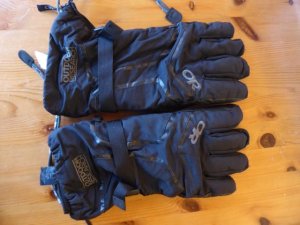
9, Invest in a good pair of winter gloves. Don’t under estimate the agony of sever hot aches! Spending £70 upwards can seem money well spent. Liner gloves keep them hygienic.
10, A spare pair of adequate winter gloves is crucial. A glove can be easily lost in the wind. An unprotected hand in Scotland’s winter mountains can mean frostbite. Dachstein mitts are old school but they are cheap and they have a long established reputation of working in Scotland.
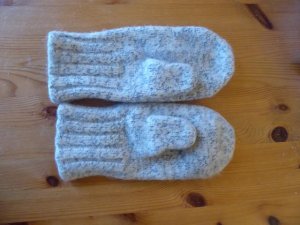
11, Consider purchasing an overlay jacket. It’s a very quick and efficient way to add a very warm layer when you take a break in the winter mountains.
12, Think about packing a vacuum flask of warm drink. If you’re a little chilled, there’s nothing like the uplifting comfort of warm fluid draining down into your core.
13, In the coldest conditions place a neck gaiter over the mouth and breathe through the fabric. It will act as a heat exchanger – extracting heat from the expired air and using it to warm the inhaled air. It can be surprisingly effective!
14, Wear Ski goggles (anti fog). No only do they provide physical protection for the eyes but they also help to keep the face a lot warmer.
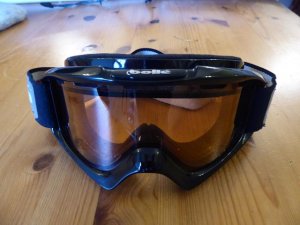
15, You will be often wear your waterproofs as much for windproofing as you will for waterproofing. Remember increasing wind has more effective on wind chill than dropping temperature.
16, Use the terrain to give you shelter from the wind if you can e.g. walk down the lee side of a ridge.
17, Winter boots – Apart from the vital requirement of being adequately stiff, proper winter mountain boots will generally be better insulated.
18, Wear warm (winter) hiking socks and make sure your boots are large enough to accommodate them without impinging your circulation.
19, Gaiters – You need to make sure snow doesn’t go in over the tops of your boots. It’s one of the best ways to get wet (and possibly cold) feet. Generally, I’m not a great fan but in winter some type of gaiter is a necessity. Internal gaiters in some leg wear, in my experience haven’t been up to the job. When interlaced with an appropriately sized conventional gaiter though, they provided a very secure closure.
20, Some insulating (duvet) jackets have such a light drape that when you add another layer over the top the air is squashed out of the insulation thus greatly reducing their warmth. Some of them simply don’t have enough insulation in them to be winter warm. I tend to carry a thick fleece that doesn’t compress and still works well when wet.
21, Wear the right fabrics. Do your research and avoid hydrophilic fabrics like cotton which looses a lot of its insulation when wet.
There are a lot of gear options on the market. What works for you is not necessarily what works for your friends, but there will definitely be something out on the market which will be good for you. Remember when you go out on the hill make sure you have enough clothing to keep you warm when you need to stop. In winter, you can’t often stop for long to eat and definitely need to think long and hard about when you’re going to add/subtract layers. The key is not to put off any decisions and if you’re out with others, don’t be shy about asking for help.
Looking for an active New Year. Looking for a fresh, invigorating way to end the year and start 2025 on a high note? Our New Year Winter Walking Break from 27th December to 2nd January offers an unforgettable blend of adventure, skill-building, and celebration.
This isn’t your typical New Year experience. Say goodbye to overindulging on the sofa and hello to crisp winter air, stunning Highland landscapes, and the camaraderie of like-minded adventurers. Whether you’re an experienced hiker or a beginner, this trip is a unique opportunity to connect with nature and yourself.

This trip isn’t all about the trails. Your adventure culminates in the lively street party in Grantown-on-Spey, where you’ll ring in the New Year with music, dancing, and fireworks under the starry Highland skies.
This experience is perfect for anyone active who enjoys the mountains and loves the idea of blending adventure with a touch of comfort and community. If you’ve got a passion for the outdoors and want to start 2025 with purpose and excitement, this trip is for you.
The week between Christmas and New Year can feel like a no-man’s-land. Instead of spending it stuck in the same routine, why not embrace something different? Our winter walking break offers the perfect balance of activity, relaxation, and celebration.
Don’t wait too long—spaces are limited, and this trip fills up fast!
📸 Need more inspiration? Check out the trip slideshow below and imagine yourself in the Highlands this New Year.
Start 2025 with an adventure worth remembering. Book your spot today!
What does ‘off the beaten track mean to you’? Depending on how adventurous you are, the phrase can mean different things to different people. It can be scary to choose the path less travelled by, but the benefits from getting off the beaten track in Scotland are exhilarating.
But, this certainly doesn’t mean you need to skip all the top sites like Loch Ness. For some, getting out of cities is rural enough and therefore Loch Ness is a great choice. But for those feeling adventurous and wanting to get a little more remote, we can help you there.
Wanting to find a little peace and quiet is the most natural thing in the world whether you’re most at home surrounded by nature, a city dweller or somewhere in between. And arguably, there is no better place than the Highlands of Scotland. Known for its epic beauty, contrasting scenery and out of this world views, you’ll soon find yourself where the air and water are fresher and the most prominent noises keeping you company is nature at its finest.
The Cairngorm National Park is the ideal base for you to experience and explore the remoteness the Highlands can offer. Depending how far off the beaten track you want to get you’ll find an array of options suited for all fitness levels and ages. Offering options to be guided, or self exploration if you prefer, Scot Mountain Holidays has it all.
We understand that only you know what getting off the beaten track means. But, Scot Mountain Holiday trips, by definition are all off the beaten track. It’s unlikely you’ll see crowds of people during any typical day with us. Choosing one of our trips is a great way to decide if the more unusual spots and a more active vacation is the way forward for you.
Whether you’re after hiking, mountain biking, walking or countryside relaxation, you’ll find it here. We can help organise a tailor-made trip for you, friends and family. Or, you can join one of our scheduled trips where you’ll meet like-minded people and gain friends for life. The choice is yours.
Walking comes in many different guises from dog walking to marathon walking. Perhaps then there’s a reason why “hiking” is becoming much more common usage for wild walking, long-distance and mountain walking. Hiking in summer and walking in winter can almost be classed as 2 different sports.
You might be a keen walker. Alternatively you might have started to develop an interest in walking later in life. You might be walking for health reasons or you might be Munro bagging. Whatever the reason, once you turn to hiking in the mountains, sooner or later you might want to extend your season so you can continue to hike all year round. You’ll want to go walking in winter.
Hiking in winter has its own distinct rewards from unending views in crystal, clear air conditions to solitude and glistening fresh snow, unblemished by evidence of other people. There are however also obvious hazards and also some aspects to winter walking/hiking, which you might not have considered.
In Scotland the winter mountains will almost invariably have snow on them for at least part of the winter. We live in hope that the season will be longer and the snow will remain, but this year, 2017, even the most stubborn of snow patches melted away completely. It’s nearly the end of October already and there’s as yet no sign of the white stuff returning. Still if you are considering some winter hiking, make sure you have received some formal training in the skills you need to remain safe in winter conditions. There is nothing more sapping than cold weather.
There are a surprising number of avalanches in Scotland but most of them go un-witnessed and hence unreported. Fortunately we do have a very good avalanche information service, especially in the Cairngorms. Throughout the winter they produce a daily report of the avalanche risk. With formal training and a bit of experience, you can learn to interpret the report so that you pick the safest route for the day.
Making sure you have the proper boots for winter is essential. “Your boot is as much as tool as your crampons and ice axe” is a sentence often repeated by our own Andy Bateman when he is talking to winter novices. You must have stiff boots rated as B2 or above. However, the problem with the boots is that they weigh a lot more than boots you will be used to walking in and they are so much stiffer that they force you to walk in a slightly different gait from usual. Over the course of a couple of days, the difference in the boots can take its toll on you. You legs and feet will feel a lot more tired than they usually do for the same amount of summer walking.
Take care when wearing winter boots. Try to baby your feet a wee bit and if you have the opportunity a little bit of simulation will stand you in good stead, even if people give you funny looks when you clump along the beach promenade or up and down the city streets in monster boots.
Your pack, whether for an expedition or a day walk, is inevitably going to be bigger in winter. Not only will you need more in your lunch, but you’ll also need space for the additional gear: your ice axe, your crampons, thicker, warmer gloves etc. You’ll need to be ready for the extra weight.
TOP TIP: always try to pack your crampons within your pack as if you have them tied to the outside of your pack, you run the risk of losing one or both of them quite easily.
In winter Scotland’s hills become mountains due to the severity of the weather conditions. There are regularly winds over 100 miles an hour in storms and though you might not plan to be out in conditions like that, even experienced mountaineers can get caught out. A friend of ours was once out in the Cairngorms when the weather turned. He and his party ended up almost crawling out as they were getting blown over when they stood up. The wind was even strong enough to take a head torch off one of their heads.
It’s not only the colder weather which helps to burn up more calories. You do have to carry more stuff with you when you go out hiking in winter. The additional weight will help to burn more calories at the end of the day. But always remember, if you put more calories in than you consume you won’t be losing weight. Just heading out for a hike is not a guarantee that you will lose weight – if that is your aim. You need to balance out keeping warm with the number of calories you consume. You don’t want to be cold, but neither do you want to overeat.
How many calories are burned by being cold?
Calories burned in cold weather
Cold air carries less moisture than warm air and therefore produces better visibility. It is warm air streams which bring precipitation. There is some truth to the statement that it is too cold in the arctic to snow.
Fewer people enjoy going out in the cold weather despite the fact that we have amazing gear now which can keep us warm in virtually any conditions. However, this means that those of us who do go out can enjoy a real sense of solitude and space.
There’s nothing better than sharing the story of the day. The warmth of a fire and a cup of tea at the end of the day will be appreciated so much more after being out in cold conditions.
When people come back after a day out in the snow, they almost always have a novel story to share. The risks are greater than in the summer, but then this enhances the benefits too.
If you stop going out in the colder weather, it may be more difficult to get back to your regular hiking than before. The risk of losing your fitness over the winter is greater as you get older. Walking on the treadmill isn’t really an adequate substitute, but if there’s no other choice …
I don’t know why the mountains seem so much more spectacular when covered in snow, but they do. Maybe it’s because they look more pristine. Maybe it’s because if gives them more shape. Whatever the reason, a little snow seems to add some “je ne sais quoi” to the mountain scene.
We specialise in guided walking holidays and walking skills here in Scotland.
If you’d like to leap in to winter at the deep end, why not think about a snow hole expedition: not an igloo, a snow hole; not an emergency shelter but a deliberate night out in a purpose built shelter. Check it out:
All content © Copyright Scot Mountain Holidays 2025
Responsive web design by Summit Web Solutions